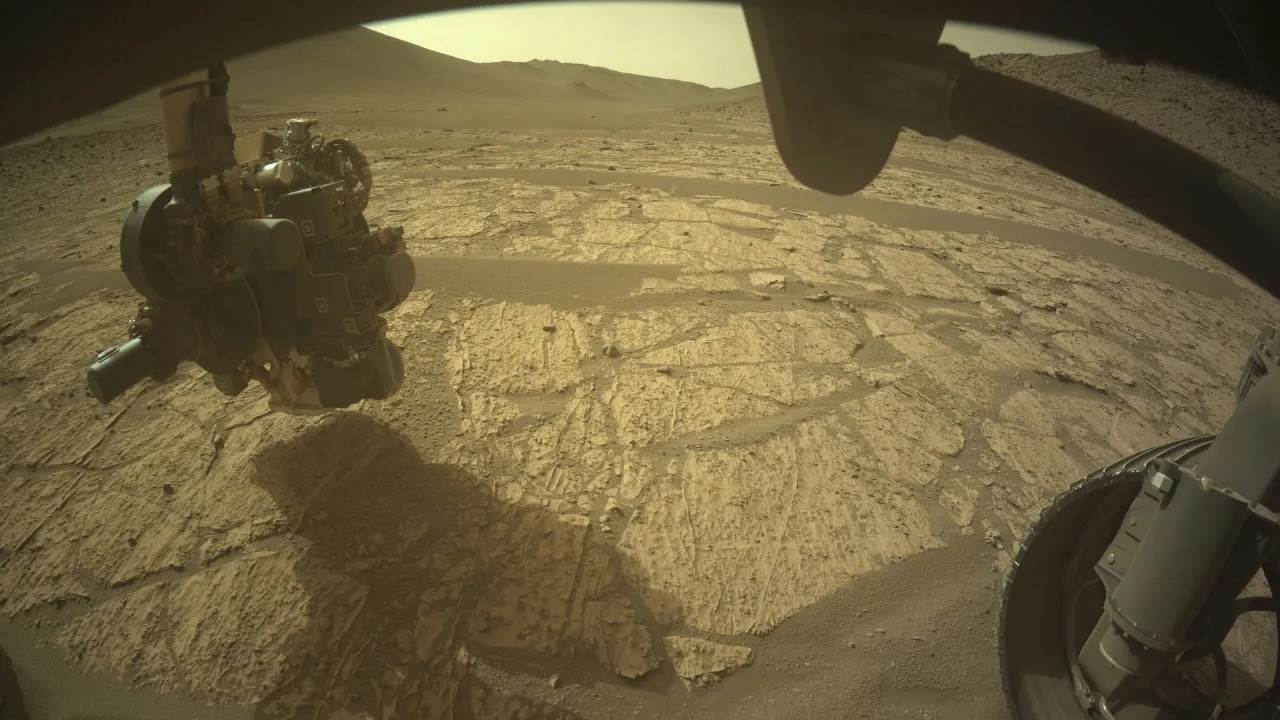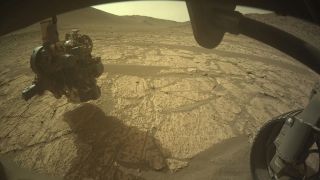Perseverance Mars rover digs into intriguing ‘Bright Angel’ rock formation (photo)

NASA Space Technology

Last week, after braving a field of sand dunes and traversing the desiccated remnants of an ancient river, NASA’s Perseverance rover reached the shining rock outcropping on the Martian horizon that the rover’s operators have named “Bright Angel.”
Perseverance has now begun its scientific investigation of a very unique place in its surroundings. Its first action: digging into the ground, scanning and imaging the Mars soil with X-rays. Over the coming months, scientists will parse the data that Perseverance sends back.
Bright Angel got its name for being an unusually light-colored patch of rock in images taken from orbit. Against the Martian landscape, the outcropping’s dramatic appearance caught scientists’ eyes.
The patch’s site at the edge of Neretva Vallis, a dried river channel that feeds into Perseverance’s Jezero Crater landing site — and a channel that Perseverance had trailed for weeks — suggested that Bright Angel might harbor interesting details about Mars’ wetter past.
As Perseverance approached Bright Angel, the rover’s operators and mission scientists on Earth got their first close-up looks at the place. Some scientists think that Bright Angel’s rocks represent older material that was exposed by now-vanished water eroding the ground.
Related: Perseverance rover’s Mars rock sample may contain best evidence of possible ancient life
After several days of sightseeing and photo-taking, Perseverance began to dig, lowering its high-speed drill into the ground. The rover then cleared the dust away by blasting it with nitrogen gas. Performing such a shallow dig, which scientists call an abrasionallows the rover to clear a circle of the Martian surface’s weathered outer layer and get at the pristine rock below.
On this spot, Perseverance deployed its PIXL instrument, a device that lights up the Martian surface with an X-ray beam and measures the light that bounces back. It’s too soon for scientists to have processed the data, but over the coming months, they will analyze it to learn more about how Bright Angel formed and how it relates to Neretva Vallis’ former river.
Now, Perseverance’s science team will determine if the rover should take an even more drastic step — determining whether samples from Bright Angel will make fine additions to its collection. If so, a planned return campaign may deliver Bright Angel rocks back to Earth.
Join our Space Forums to keep talking space on the latest missions, night sky and more! And if you have a news tip, correction or comment, let us know at: community@space.com.
Discover more from Tamfis Nigeria Lmited
Subscribe to get the latest posts sent to your email.



 Hot Deals
Hot Deals Shopfinish
Shopfinish Shop
Shop Appliances
Appliances Babies & Kids
Babies & Kids Best Selling
Best Selling Books
Books Consumer Electronics
Consumer Electronics Furniture
Furniture Home & Kitchen
Home & Kitchen Jewelry
Jewelry Luxury & Beauty
Luxury & Beauty Shoes
Shoes Training & Certifications
Training & Certifications Wears & Clothings
Wears & Clothings
















